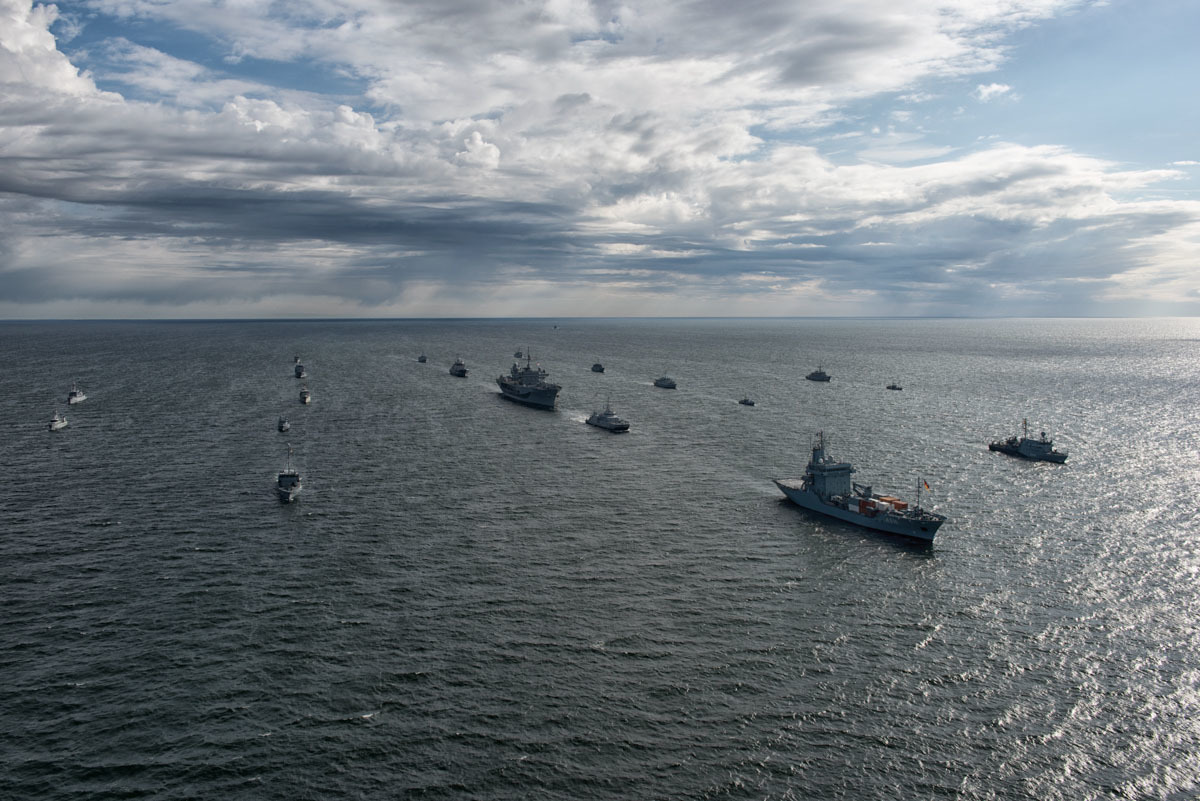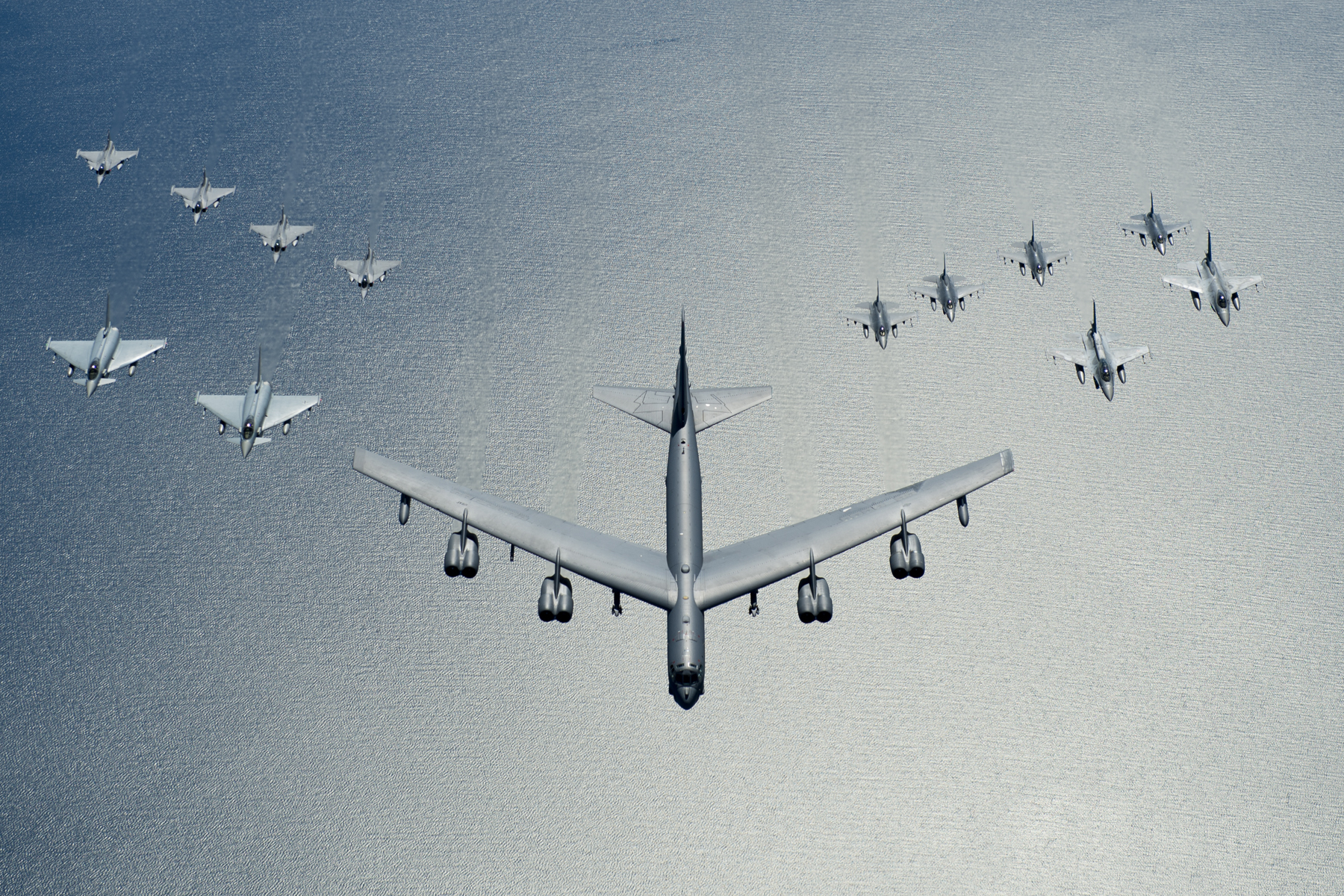
Russian navy activity around an ongoing annual NATO exercise in the Baltic Sea has been more muted than last year – and much more professional than a low-altitude fly-by of an American destroyer by a Russian fighter in April – partly due to heavy criticism of Russia’s unsafe behavior and partly due to recent face-to-face conversations, a top U.S. Navy commander in the region said.
Vice Adm. James Foggo, commander of Naval Striking and Support Forces NATO and commander of U.S. 6th Fleet, told reporters today that two Russian intelligence vessels and a couple aircraft have monitored BALTOPS 2016 in a professional and safe manner – whereas last year the Russian navy sent warships to monitor the NATO exercise.
“This year there has been less intensity of Russian activity as compared to last year in BALTOPS 2015. Certainly nothing like we saw with the close fly-by of the USS Donald Cook [in April] right here in the Baltic Sea. What we have seen is shadowing by two Russian intelligence vessels since we really left port in Tallinn, Estonia,” Foggo said, speaking to reporters from aboard the USS Mount Whitney (LCC-20) command ship.
“But they’ve been well behaved and professional on the high seas as we conducted our exercises.”
Similarly, whereas last year Russian jets made an appearance as soon as the participating ships were leaving port for the start of the exercise, Foggo said he didn’t see a Russian jet with his own eyes until last night, after 10 days of the exercise.
“I personally think that the Russians have changed their calculus and they’ve gone from tactical kinds of reactions to BALTOPS to a more strategic reaction,” he said.
“By that I mean, just after we sailed from Hanko Island in Finland, the Finnish minster of foreign affairs was in Moscow, and the operations on Finnish soil were greeted by disdain by the Russian Foreign Minster (Sergey) Lavrov in his statement at the end of their meeting.”
This diplomatic response rather than a physical show of force is safer and more productive, and Foggo said he would welcome this as a permanent change in behavior.
“Quite frankly, with the help of the media I think you changed the calculus of the Russians because we categorized that interaction at sea as unsafe and unprofessional. I don’t think they want to be seen that way, they’re a professional navy and I think that might – it’s a theory of mine – I think that might have caused a change in their behavior,” he said.
“And I welcome that, because when those kinds of things happen, it distracts us from our training.”
Foggo’s chief of staff met with a Russian delegation last week in Moscow to have “candid and frank discussions about how to operate professionally and not get in each others’ way” – Foggo said a similar meeting was held in the middle of BALTOPS 2015 last year in Naples, Italy – “and I think it was very productive and I also think it probably had a mitigating effect on what transpired here during BALTOPS 2016.”

Royal Navy Rear Adm. Paddy McAlpine, the deputy commander of Naval Striking and Support Forces NATO, said during the same media roundtable today that the Russian navy has spent the last 10 days training in the Baltic Sea, with “quite a lot of ships out last week operating in the waters around Kaliningrad.” But he said those ships kept their distance and had “no real interference” in BALTOPS 2016 activities.
McAlpine said he has served in the Royal Navy for 34 years and “it wouldn’t be the same exercise without the (Russian) AGI coming and watching and being there all the time. But as the admiral said, professionally done, they kept their distance, they haven’t interfered. And so it’s their right to be on the high seas as it’s our right to be on the high seas staying outside territorial waters.”
Despite the improvement over previous tense interactions, Foggo said he would still like to see more from Russia. Whereas NATO went so far as to post online the dates and locations of the exercise, including specific amphibious landings, for the sake of transparency with Russia, Moscow responded by announcing this week a SNAPEX – a “snap exercise” conducted with little or no warning. Foggo said the SNAPEX hadn’t happened yet and that Russia announced no specifics – only that senior leaders would be on hand to assess the force’s ability to mobilize rapidly. He said he didn’t know if the SNAPEX would involve land forces, which would signal a response to the Anakonda 2016 exercise taking place on land in Europe, or if it would involve naval forces to push back against BALTOPS.
“It’s a good example of the lack of transparency” coming from Moscow, Foggo said.
While pleased with Russia’s willingness to use diplomacy in the last couple weeks, Foggo said the U.S. Navy must still remain vigilant, particularly against the potential Russian submarine threat.
“The former Russian chief of naval operations recently was quoted in the New York Times, was basically conducting 50-percent higher number of deployments than Russia has in the past. So they have a smaller force but they’re operating them more often and they’re deploying more often,” Foggo said of Moscow’s submarine fleet.
“We’re now seeing an increase in the density of Russian submarine presence in places like the Black Sea. The Russians have made it quite clear that in addition to the one Kilo-class submarine that’s been in the Black Sea since the last time I served in 6th Fleet as a one-star in 2010, they’re going to add six more – two of them are already there, there are four more coming. And the Russians have also been public about the fact that they just don’t intend to operate those Kilo-class diesel electric submarines in the Black Sea, they also intend to operate in the Mediterranean. So that’s quite a large number of very stealthy, very capable submarines that carry a very effective cruise missile called the Kalibr cruise missile.”
Foggo wrote about his concerns regarding Russian submarine activity in the U.S. Naval Institute’s June issue of Proceedings.





